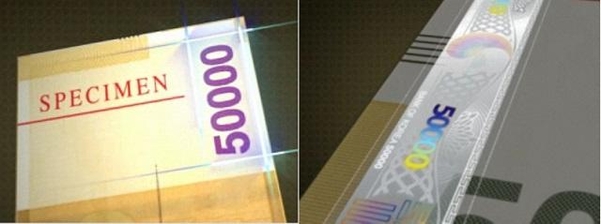Input 2021.01.05 01:00
Nature Materials announced… “Commercialized as a sticker for product activation within the year”

The Ulsan Institute of Science and Technology (UNIST) announced on the 5th that the research team of Professor Ji-Seok Lee of the Department of Energy and Chemical Engineering has developed’conjugated polymer particles’ that can implement several’anti-counterfeiting devices’ at once. The research results were also published in the international academic journal’Nature Materials’.
Usually, counterfeit devices are coated on the surface of the bill to prevent counterfeiting. Typical examples are’structure color’, which changes color depending on the viewing direction, and’hologram’, which changes shape. Structural colors and holograms are designed to be difficult to imitate, but as time goes by, imitation techniques are gradually becoming more sophisticated. In 2019, counterfeit bills that were elaborately produced and pasted on a band-shaped hologram with a high-performance printer were also found on the market.

The research team also developed a process that enables mass production of these particles. After attaching several particles in a grid shape, he succeeded in drawing a masterpiece by arbitrarily adjusting the structure color for each particle.
Professor Lee Jin-seok said, “First of all, we plan to make a sticker for authenticating cosmetics and commercialize it by the end of the year,” he said. “After that, we will apply it as an edible sticker that can be pasted on pill capsules and as a coating material for anti-counterfeiting devices.”

